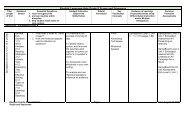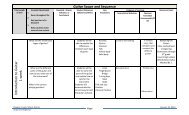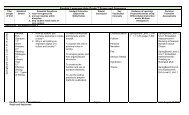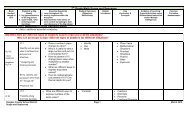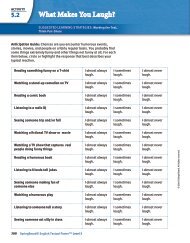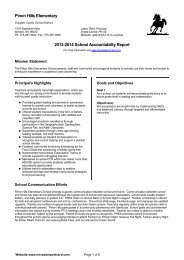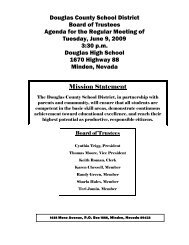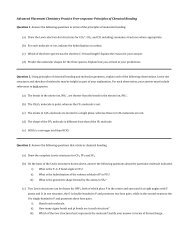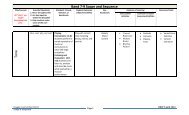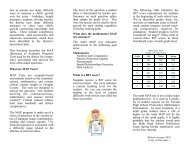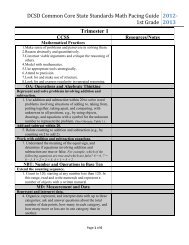Chemistry I 9.1 â Calculating Quantities in Reactions Objectives and ...
Chemistry I 9.1 â Calculating Quantities in Reactions Objectives and ...
Chemistry I 9.1 â Calculating Quantities in Reactions Objectives and ...
You also want an ePaper? Increase the reach of your titles
YUMPU automatically turns print PDFs into web optimized ePapers that Google loves.
D. Mole-Mole Calculationsa. Given the # of moles of reactant(s), calculate the number of moles ofproduct(s):Ex.: N 2(g) + 3H 2(g) ® 2NH 3(g)i. How many moles of ammonia are produced when 3.2 mol of hydrogenreact with nitrogen?b. Given the # of moles of product(s), f<strong>in</strong>d the number of moles of reactants(s):Ex.: N 2(g) + 3H 2(g) ® 2NH 3(g)i. How many moles of nitrogen are needed to make 7.24 moles of NH 3 ?E. Mass-Mass Calculationsa. Given the of a reactant or product, calculate the mass of any other reactant orproduct <strong>in</strong> the equationi. Use dimensional analysis <strong>and</strong> go “through” moles. (Go from _______ to_______ to __________.)ii. You‛ll need ____________________!Ex.: N 2(g) + 3H 2(g) ® 2NH 3(g)iii. Calculate the number of grams of NH 3 produced by the reaction of 2.8 gof hydrogen with an excess of nitrogen.



